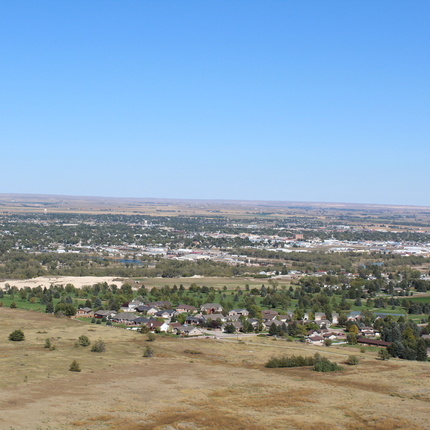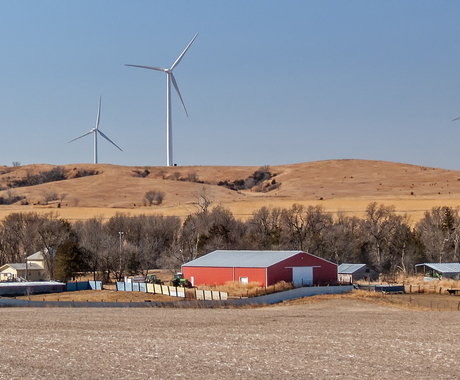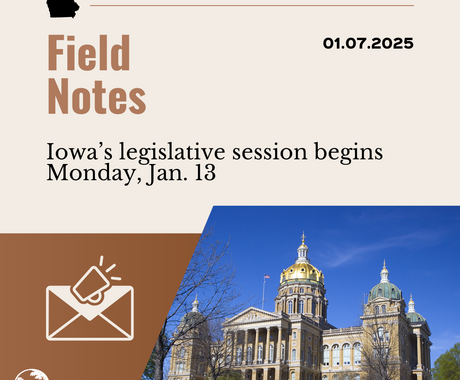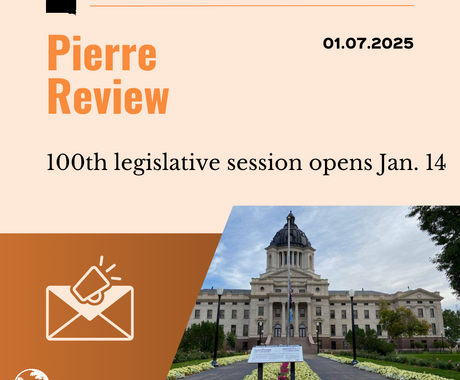This article is another in the series from Jon M. Bailey, a leading proponent of policy and research into rural family economic security. Jon served as a director of policy and research at the Center for Rural Affairs for years.
In a previous article, I discussed the existence of major income inequality on the rural Great Plains. Data show that rates of income inequality are high in rural counties of the Great Plains region, and generally significantly higher than urban areas of the region, particularly compared to suburban areas of the major cities of the region.
With that economic fact we must next consider what public policy options exist to address income inequality. Below is a first handful of policy responses that can begin to address income inequality and make an economic system that works better for low-income individuals and families. I also discuss how each of the responses can work for rural individuals and families.
1. Expand the Earned Income Tax Credit
The Earned Income Tax Credit (EITC) is a federal income tax credit (also matched in some states) for low-income working parents. The EITC is a proven bi-partisan income support, poverty reducer, and work incentive. The EITC is used in larger numbers in rural areas of the nation and the Great Plains.
Recent proposals to expand the EITC would increase the income of eligible recipients and begin to close the income inequality gap. The EITC expansion proposals would expand the EITC to more workers without qualifying children, would increase the maximum value of the credit, would change the phase-in and phase-out rates of the credit, and would increase the amount of income at which taxpayers may claim the credit. Data show that such expansion will disproportionately benefit rural residents.
2. Elimination of Payroll Taxes for Low-Income Workers
Federal payroll taxes – Social Security and Medicare – are regressive (lower income taxpayers have a larger portion of their income go to these taxes) and a significant burden on low-income workers (though the programs they fund are eventually progressive in nature). The bottom fifth of households paid an average of 6.6 percent of their incomes in payroll tax in 2014, according to Tax Policy Center estimates, while the top fifth paid 5.9 percent and the top 1 percent of households paid just 2.3 percent.
With rural per capita income that is 78 percent of urban per capita income and rural earnings per job that is 71 percent of urban earnings per job (both 2012 data), a large share of rural workers would benefit from elimination of payroll taxes. This would also serve to enhance the income of many rural individuals and families and begin to close the income inequality gap.
3. Expand Apprenticeships
Rural communities, including those on the Great Plains, are severely lacking well-paying, skilled jobs. Rural employers will state that there are jobs available, but not enough skilled workers to fill them. This is particularly true with jobs of the future involving more technical skills.
According to the Center for American Progress, apprenticeships have been shown to significantly boost workers’ lifetime wages and create pathways to well-paying careers for unemployed or underemployed young workers. Researchers have found that workers who complete an apprenticeship earn an average of $300,000 more in wages and benefits than comparable job seekers in their lifetime. Apprentices also gain debt-free education at a time when higher education and the debt incurred by many to complete it are on the rise.
Creating apprentice programs that connect schools, community colleges, and employers will help enhance skills, provide needed workers for employers, and raise incomes that will help close the income gap. States could also provide incentives through their tax codes to businesses providing apprentice opportunities to young workers and low-income workers.
4. Raise the Minimum Wage
Increasing the minimum wage is a direct and efficient ways to address inequality is to raise the minimum wage. While average workers’ wages have remained stagnant, the pay for those at the top has skyrocketed. Today, CEOs make nearly 300 times more than average workers do—a differential that is more than 10 times larger today than it was 50 years ago. If the minimum wage had kept pace with increases in worker productivity that have driven the U.S. economy since the late 1960s, the minimum wage would be close to $22 per hour. Yet the minimum wage has not even kept up with inflation and is actually almost a third lower in value than it was in 1968, contributing directly to rising levels of income inequality.
Nebraska and South Dakota are among states that have recently increased the minimum wage to a level beyond that of the federal minimum wage (in the Great Plains region, Colorado, Minnesota, and Montana also have a minimum wage higher than the federal minimum wage, primarily by indexing the minimum wage to inflation).
Concern always exists among rural businesses, where small businesses dominate, that increasing the minimum wage will lead to increases in unemployment and a drop in business activity. However, that has not occurred in Nebraska or South Dakota, and in fact has not occurred in any state that has raised its minimum wage. Research shows that raising the minimum wage boosts the economy and may actually boost employment due to economic activity resulting from increased income. The Center for American Progress also notes that a “higher minimum wage could positively affect economic growth by inducing more human-capital development, which can also help lower income inequality.”





